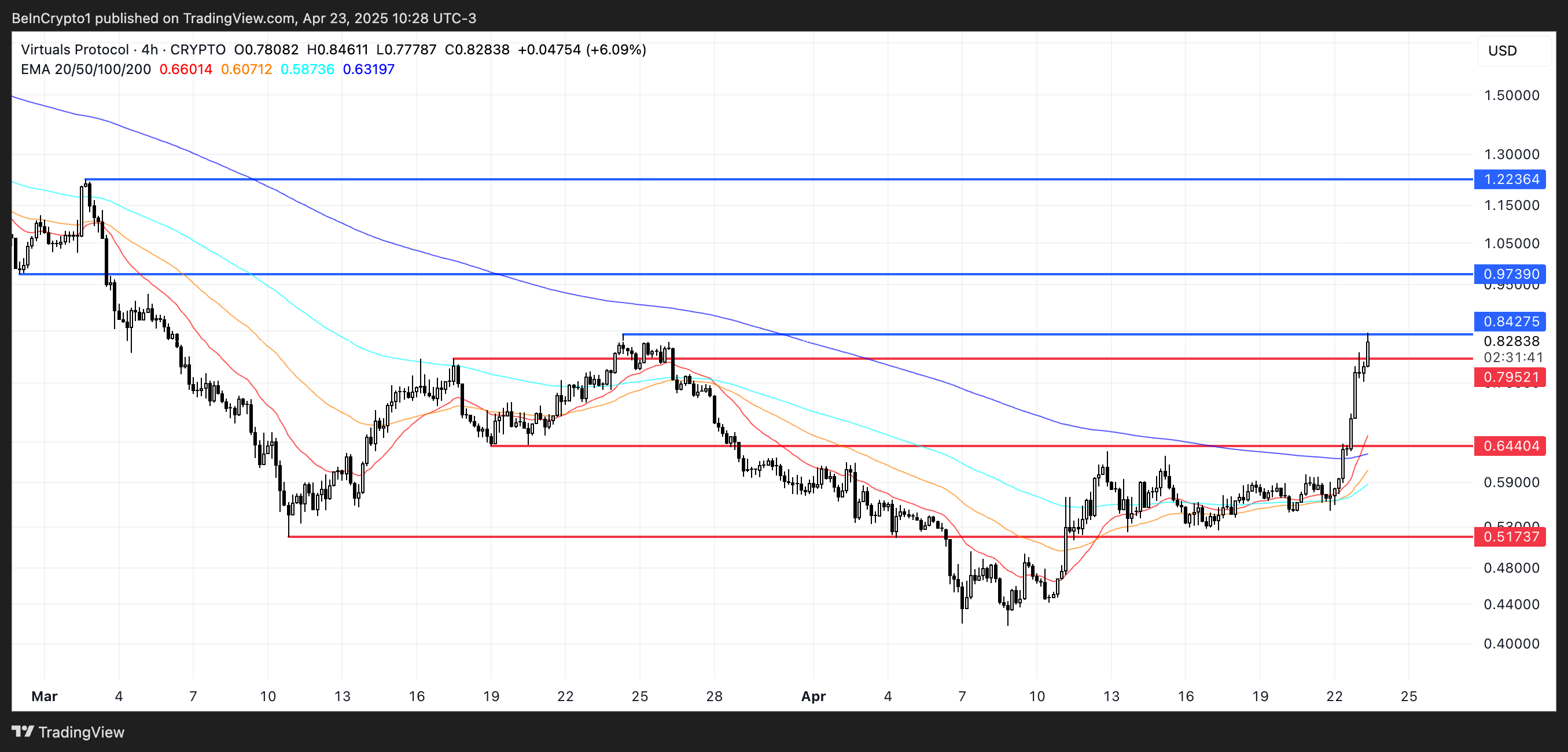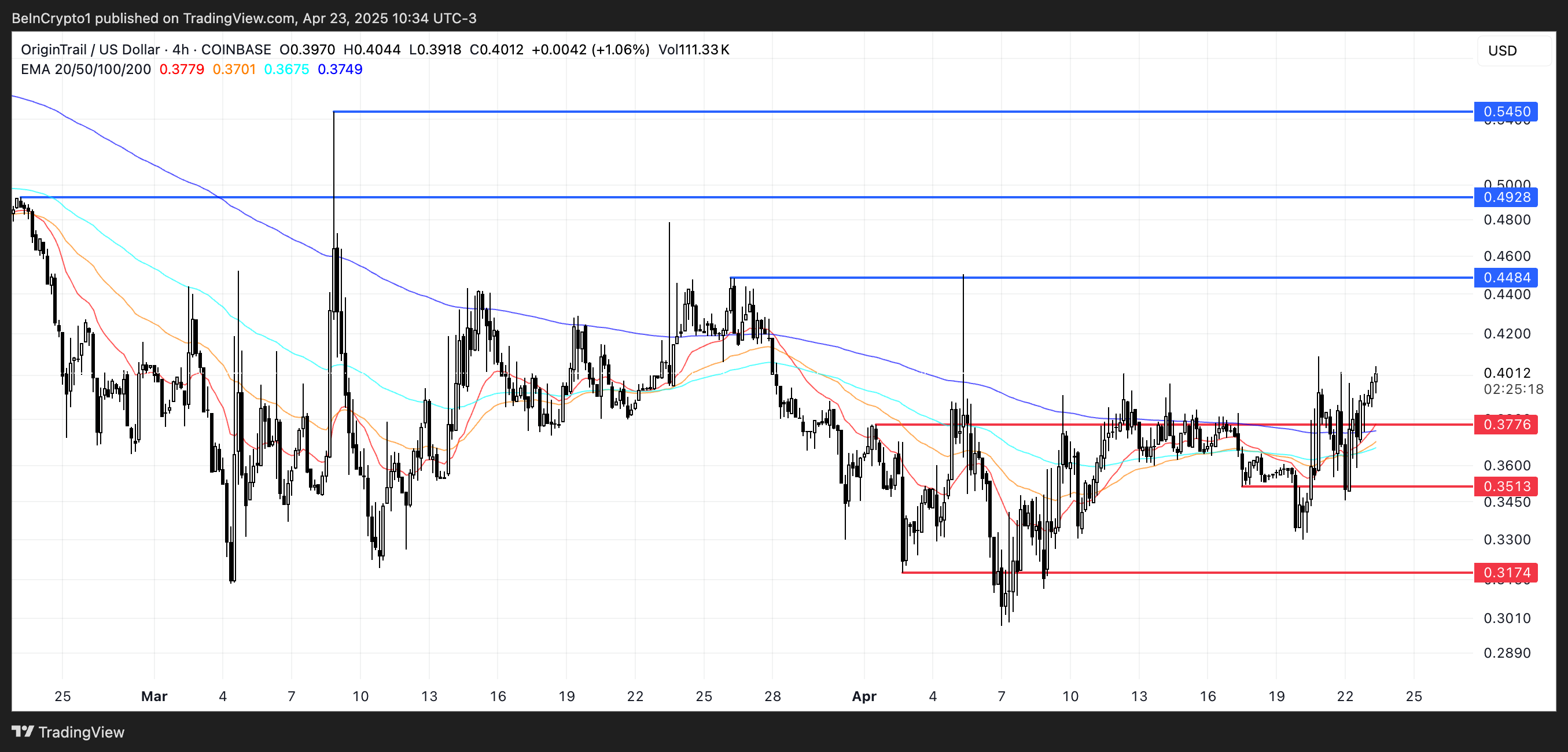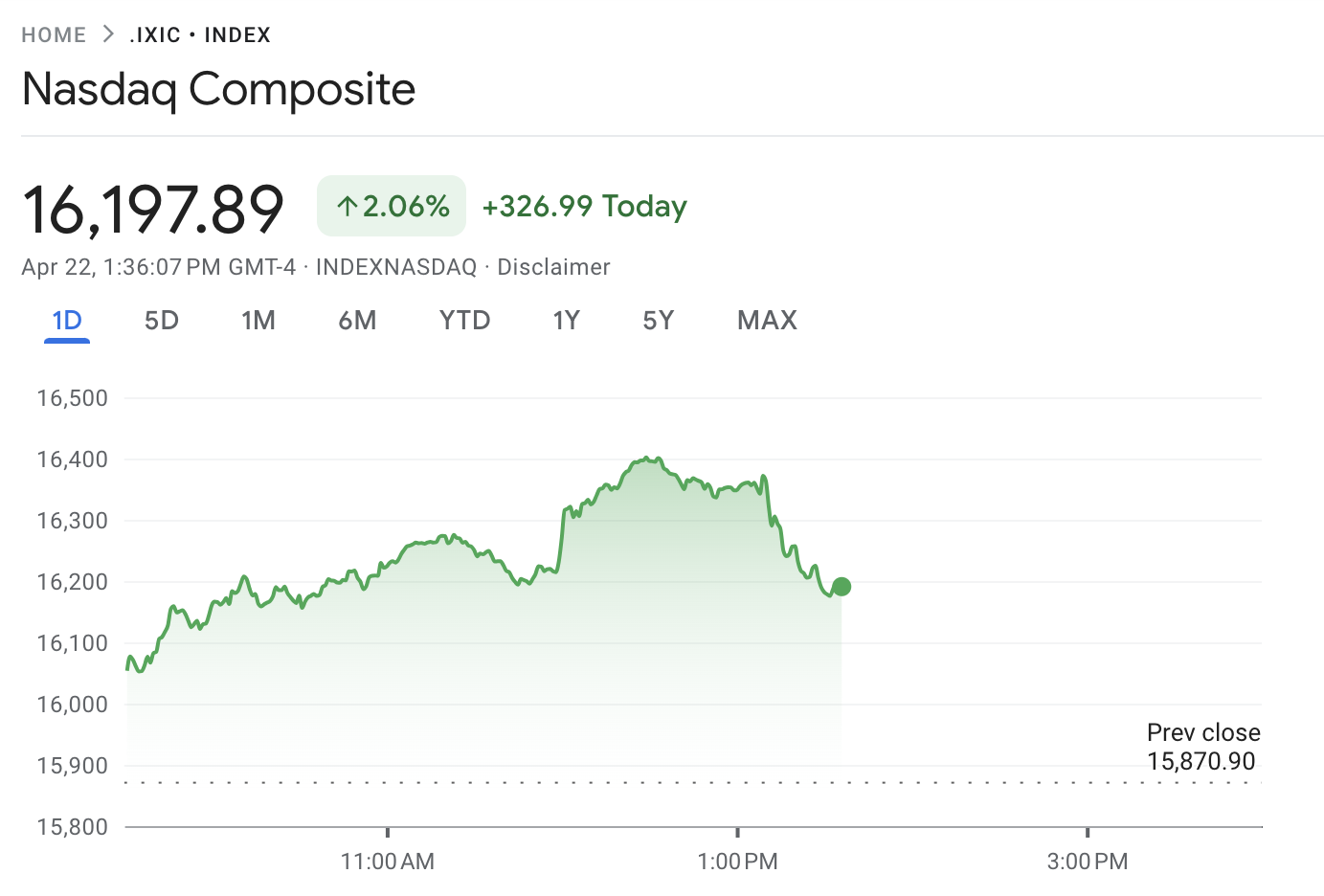Crypto AI agents coins are gaining fresh momentum as the sector shows signs of recovery. ARC, VIRTUAL, and TRAC are three standout tokens leading the narrative into the end of April.
ARC and VIRTUAL have posted explosive gains in the past 24 hours, while TRAC remains steady with more modest growth but strong fundamentals. With technical indicators like golden crosses appearing across all three charts, these tokens are worth watching closely in the coming days.
AI Rig Complex (ARC)
ARC has seen extreme volatility in recent months, crashing 91% between February 11 and April 11 amid a broader correction in crypto AI agent tokens.
However, the token has staged a sharp rebound, climbing nearly 66% in the past week and soaring 44.5% in just the last 24 hours.
ARC is the project behind Rig, an open-source framework designed to help developers build portable, modular, and lightweight artificial intelligence agents.

Technically, ARC is showing early signs of a potential trend reversal. A golden cross formed on its EMA lines yesterday, and another could be on the way.
If the bullish momentum continues, ARC could test the $0.071 resistance and possibly extend to $0.083. On the flip side, if the recent strength fades, support levels at $0.048 and $0.043 will be key.
A breakdown below those levels could open the door for a retest of $0.034.
Virtuals Protocol (VIRTUAL)
VIRTUAL remains one of the most prominent tokens in the crypto AI agent space, often seen as a leading indicator for the sector.
At its peak, the project reached a staggering market cap of nearly $5 billion, though it has since retraced significantly to $521 million.
Despite the decline, VIRTUAL is showing signs of renewed strength, jumping 49% over the last seven days and gaining 40% in the past 24 hours alone—suggesting that interest in AI-driven crypto tokens may be making a comeback.

From a technical perspective, VIRTUAL’s EMA lines have formed consecutive golden crosses since yesterday, pointing to growing bullish momentum.
If it can break through the $0.84 resistance level, the next target would be $0.97. Should market sentiment continue to improve and hype around crypto AI agents return, a move toward $1.22 is possible—marking its first time above $1 since early March.
However, if the current uptrend falters, key support lies at $0.79. A break below this could send VIRTUAL down to $0.64, or even as low as $0.517 in a deeper pullback.
OriginTrail (TRAC)
TRAC, OriginTrail’s native token, powers a decentralized ecosystem that aims to build a trusted knowledge infrastructure for artificial intelligence.
Its goal is to enable a Verifiable Web for decentralized artificial intelligence applications. While TRAC experienced a 32% correction between March 26 and April 7, it held up better than many other crypto AI agent tokens.
In line with that resilience, TRAC is up 7.4% over the last seven days — the smallest gain among major AI tokens, yet still positive.

Technically, TRAC’s EMA lines have just formed golden crosses, hinting at the early stages of an uptrend.
If momentum continues, TRAC could test resistance at $0.448, and a breakout there could send it toward $0.492 and potentially $0.54.
On the downside, traders are keeping a close eye on the $0.377 support level. Failure to hold that zone could trigger a drop to $0.35 and, in a deeper correction, possibly down to $0.317.
The post 3 Crypto AI Agents Tokens To Watch For The End of April appeared first on BeInCrypto.






